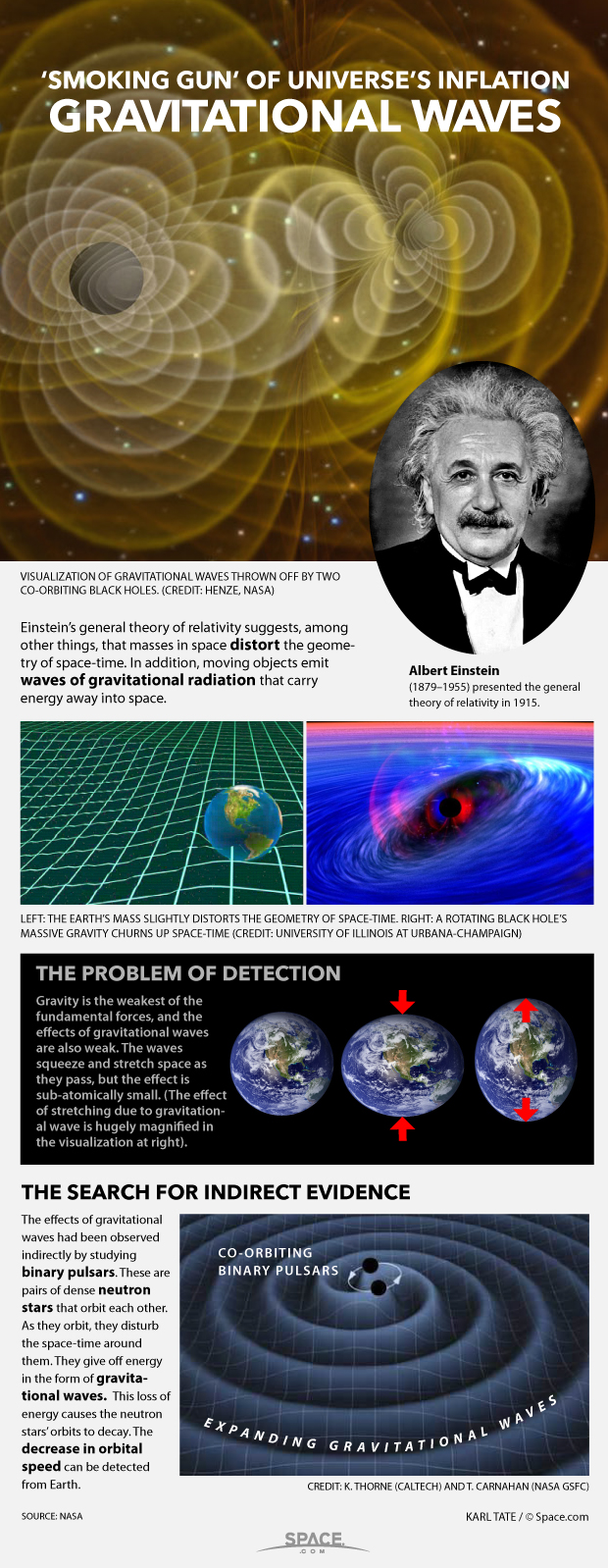Nobel Prize Awarded for Sensational Gravitational Waves Discovery
By Megan Gannon, Live Science Contributor | October 3, 2017 09:10am ET
BERLIN — As expected by many, the 2017 Nobel Prize in physics went to three scientists who helped detect gravitational waves, ripples in space-time predicted by Einstein.
“This year’s prize is about a discovery that shook the world,” physicist Thors Hans Hansson said when announcing the winners from Stockholm.
Half of the 9 million Swedish krona ($1.1 million) award will go to Rainer Weiss of MIT. The other half will go jointly to Barry Barish and Kip Thorne of Caltech. All three were founders of the Laser Interferometer Gravitational-Wave Observatory, or LIGO, which detected gravitational waves for the first time in 2015.
BERLIN — As expected by many, the 2017 Nobel Prize in physics went to three scientists who helped detect gravitational waves, ripples in space-time predicted by Einstein.
“This year’s prize is about a discovery that shook the world,” physicist Thors Hans Hansson said when announcing the winners from Stockholm.
Half of the 9 million Swedish krona ($1.1 million) award will go to Rainer Weiss of MIT. The other half will go jointly to Barry Barish and Kip Thorne of Caltech. All three were founders of the Laser Interferometer Gravitational-Wave Observatory, or LIGO, which detected gravitational waves for the first time in 2015.


Credit: By Karl Tate, Infographics Artist
Albert Einstein had theorized that space-time can be stretched and compressed by collisions of massive objects in the universe. However, experimental proof for such events eluded scientists for 100 years. [The 18 Biggest Unsolved Mysteries in Physics]
On Sept. 14, 2015, LIGO’s two extremely sensitive instruments in Washington state and Louisiana simultaneously observed a faint gravitational-wave signal. The ripples in space-time came from a pair of two massive black holes that spiraled into each other 1.3 billion years ago.
It took scientists such a long time to arrive at the discovery because gravitational waves — even though they come from violent, powerful collisions — are extremely small once they reach Earth.
During the event detected in September 2015, scientists think that about three times the mass of the sun was transformed into gravitational waves in less than a second. [How Gravitational Waves Work (Infographic)]
The L-shaped LIGO detectors have two arms, each 2.48 miles (4 kilometers) long, with identical laser beams inside. If a gravitational wave passes through Earth, the laser in one arm of the detector will be compressed and the other will expand. But the changes are tiny— as tiny as one-thousandth of a diameter of a nucleon, said Walter Winkler, a physicist with the Max Planck Institute for Gravitational Physics in Hannover, Germany.
“You have first to keep all the distortions out and then to increase the sensitivity of the measurement system,” Winkler, who has worked on gravitational-wave detection since the 1970s, told Live Science. “It took thousands of people to come to this. It’s really a new sort of astronomy.”
The Nobel Committee acknowledged that the discovery was a huge collaborative effort. The paper announcing the September 2015 detection had more than 1,000 authors. But, according to the Nobel rules, the prize can be shared by no more than three scientists.
“Without them the discovery would not have happened,” Nils Mårtensson, chairman of the Nobel Committee for Physics, said of the three winners at the news conference in Stockholm.


Credit: By Karl Tate, Infographics Artist
Scientists here at the German Physical Society (DPG) cheered the results.
“I had really hoped for it because it’s a fantastic discovery,” DPG President Rolf-Dieter Heuer told Live Science. He added that the detection of gravitational waves opens “a window into an unseen world that will bring us more information in the future about the universe.”
The findings might seem esoteric, but Heuer said that it’s difficult to predict when and in which field this research could have practical applications. He noted that it took more than 40 years for the discovery of antimatter to be used in positron emission tomography, or PET, scans common in hospitals today.
Some had expected the LIGO team to win the prize last year. But Gunnar Ingelman, secretary of the Nobel Committee and a professor of subatomic physics at Uppsala University in Sweden, said the detection of gravitational waves was not eligible last year. According to the rules of the committee, the discovery has to be published the year before the awards are announced. (The LIGO detection was published in February 2016.)
The LIGO team has made several additional discoveries. Just last week, LIGO scientists announced they had detected gravitational waves for the fourth time, on Aug. 14, 2017. The ripples were also detected by another instrument called VIRGO, near Pisa, Italy.
“In the early days, it was not clear if these gravitational waves were real or could be observed,” Ingelman told reporters here by video. “It was an enormous effort to reach the sensitivity to build a detector which could actually observe such tiny, tiny distortions.”
Originally published on Live Science.






